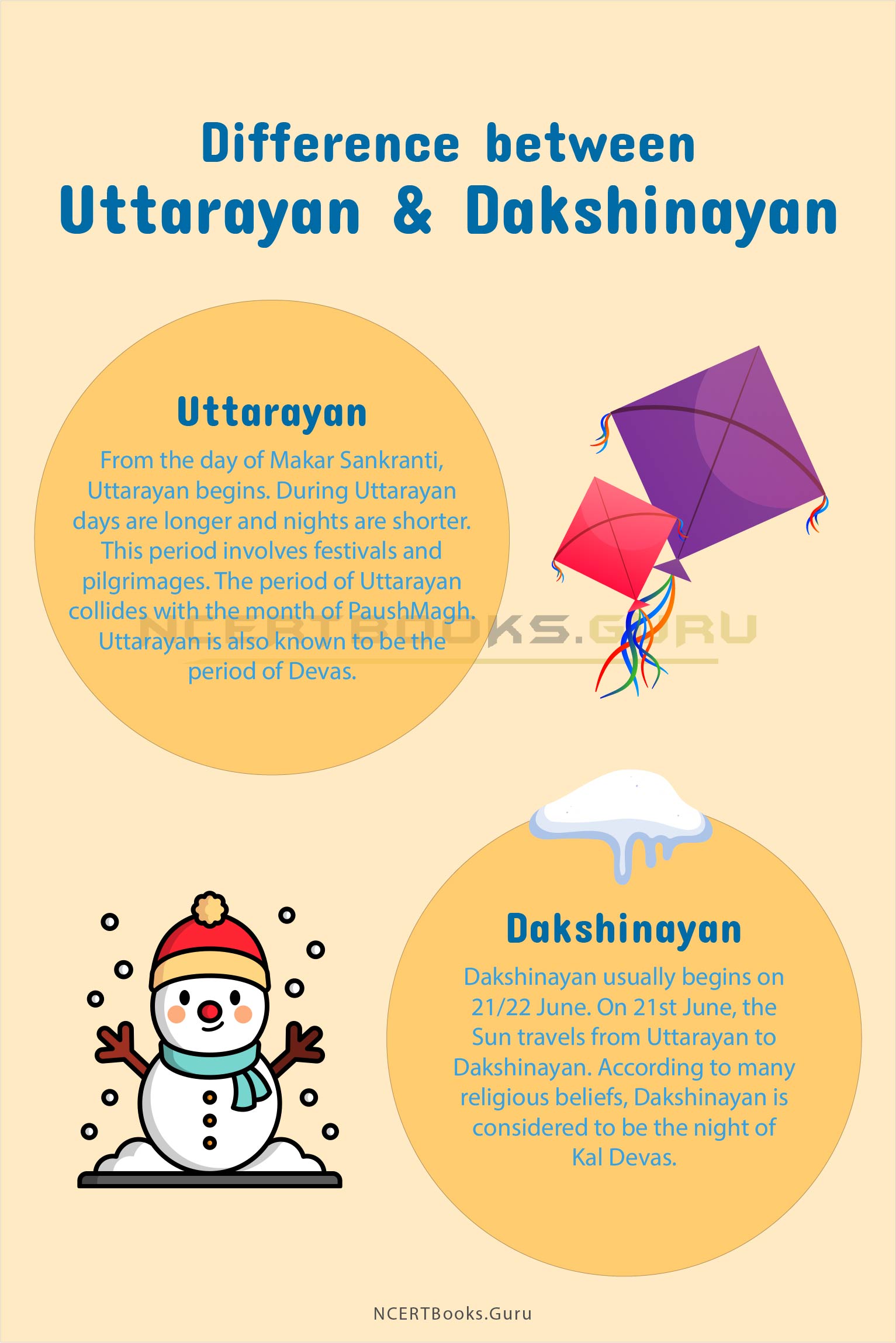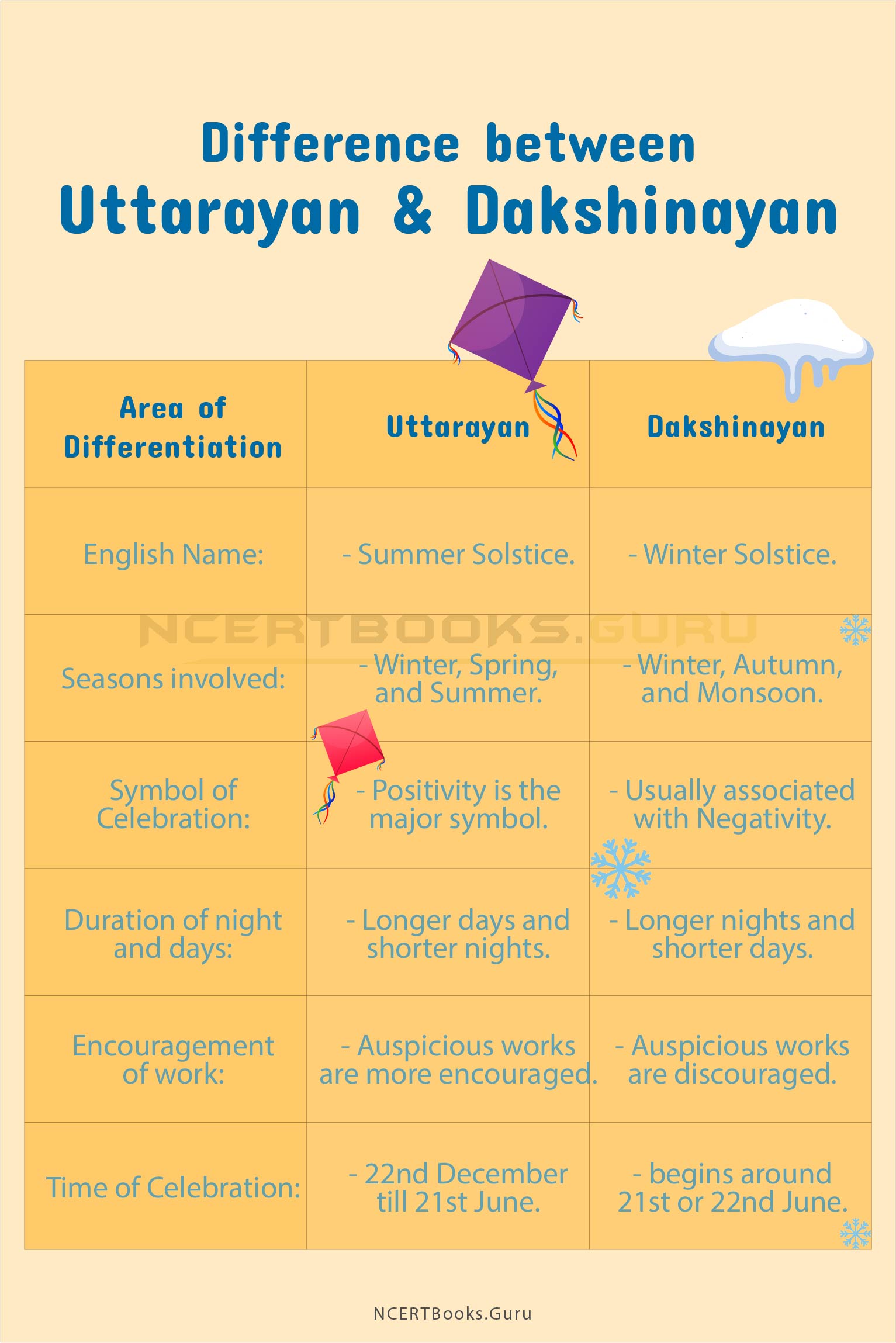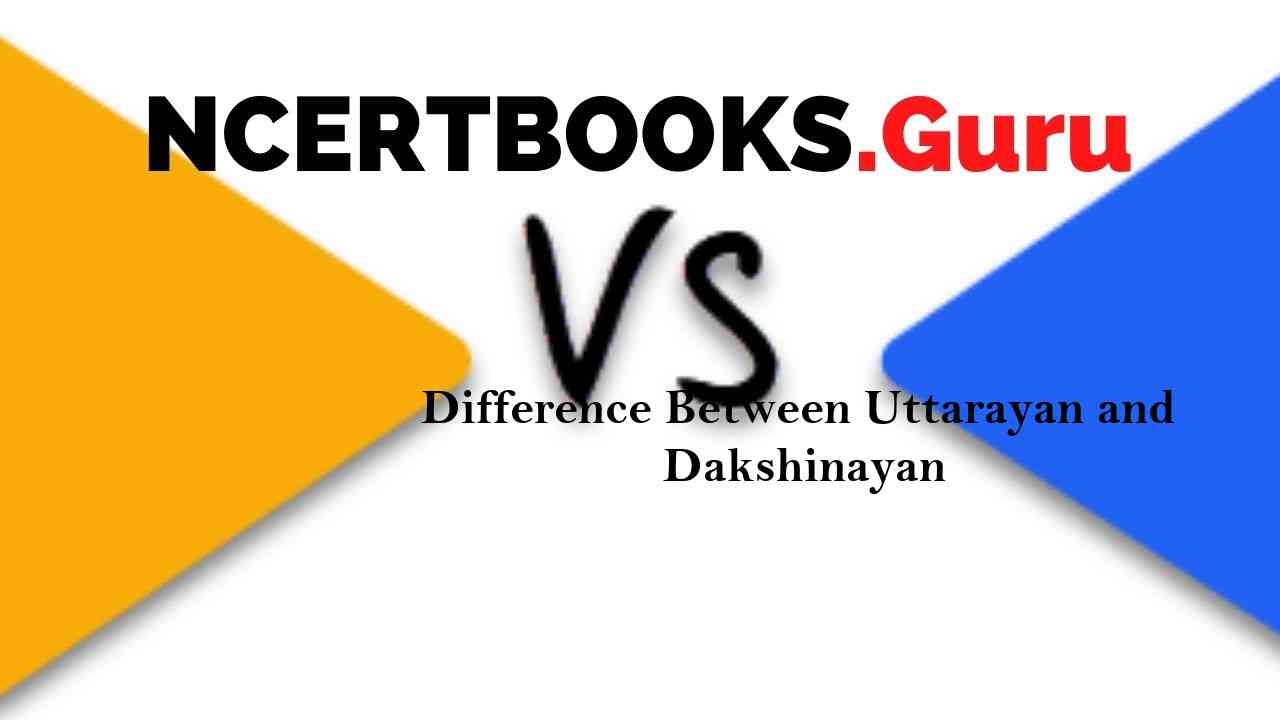Introduction
According to Hindu Panchang, in a year, there are two Ayan’s (Solstices). In other words, the position of the Sun changes twice every year. These changes are known as Uttarayan (also summer solstice) and Dakshinayan (winter solstice). Both these periods take a duration of six months each to happen.
You can also find differences between articles on various topics that you need to know. Just tap on the quick link available and get to know the basic differences between them.
What is the Difference Between Uttarayan and Dakshinayan?
About Uttarayan
From the day of Makar Sankranti, Uttarayan begins. During Uttarayan days are longer and nights are shorter.
This period involves festivals and pilgrimages. The period of Uttarayan collides with the month of PaushMagh. Uttarayan is also known to be the period of Devas.
Donations, charities, yagyas, austerities, marriages, mundan etc. are considered to be auspicious during this period. This period is six months long. According to shastras, Uttarayan is actually considered to be a symbol of positivity.
About Dakshinayan
Dakshinayan usually begins on 21/22 June. On 21st June, the Sun travels from Uttarayan to Dakshinayan. According to many religious beliefs, Dakshinayan is considered to be the night of Kal Devas.
Nights are longer and days are usually shorter during Dakshinayan. During Dakshinayan, Sun do travels with an inclination, especially toward the southern direction.
The period that is associated with fasts is Dakshinayan. Many kinds of auspicious works are usually prohibited during the time of Dakshinayan.

Difference Between Uttarayan and Dakshinayan
| Area of Differentiation: | Uttarayan | Dakshinayan |
| English Name: | Summer Solstice is also called as Uttarayan. | Winter Solstice is also called as Dakshinayan. |
| Seasons involved during the celebration: | Uttarayan comprises of Winter, Spring, and Summer. | Dakshinayan consist of winter, autumn, and monsoon. |
| Symbol of Celebration: | Positivity is the major symbol of Uttarayan. | Dakshinayan is usually associated with Negativity. |
| Duration of night and days: | Uttarayan has much longer days and shorter nights. | Dakshinayan is associated with quite longer nights and shorter days. |
| Encouragement of work: | Auspicious works are usually more encouraged during Uttarayan. | Auspicious works are usually more discouraged during Dakshinayan. |
| Time of Celebration: | Uttarayanbegins around 22nd December and lasts for six months till approximately 21st June. | Dakshinayan begins around 21st or 22nd June. |

Similarities Between Uttarayan And Dakshinayan
- According to the Hindu scriptures, Uttarayan is when Sun travels from South to North, also known as Makar Sankranti.
- Out of six seasons, three of them fall in this solstice: winter, spring and summer.
- According to Puranas, in order to sacrifice BhishmaPitama life, he waited for Uttarayan.
- Uttarayan is considered the period of day time for God, while Dakshinayan is the night for them.
- In terms of sadhana, Uttarayan is for enlightenment while Dakshinayana is for purification.
Frequently Asked Question on Difference Between Uttarayan And Dakshinayan
Question:
What is meant by Uttarayana and Dakshinayana?
Answer:
The motion of the Sun going from south to north is known as Uttarayana – and when the Sun is moving towards north and reaches north it starts moving south, and it is called Dakshinayana – the Sun is moving towards south.
Question:
What is uttarayan called in English?
Answer:
Makar Sankranti is popularly known as Uttarayan or the Festival of Kites. Uttarayan actually a combination of two Sanskrit words, ‘uttar’ meaning north and ‘ayan’ meaning movement towards.
Question:
What is the importance of Makar Sankranti?
Answer:
Makar Sankranti is believed to be an auspicious time for peace and prosperity. The day is regarded quite important because of spiritual practices like to take a holy dip in rivers, especially Ganga, Yamuna, Krishna, Godavari and Cauvery to wash away sins.
